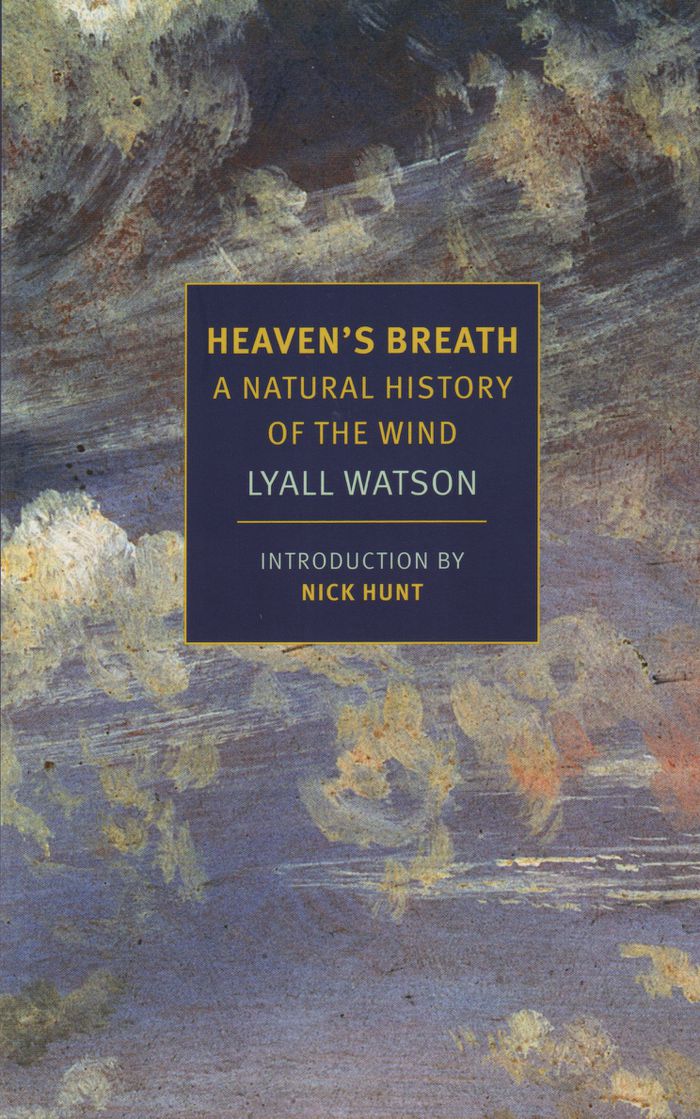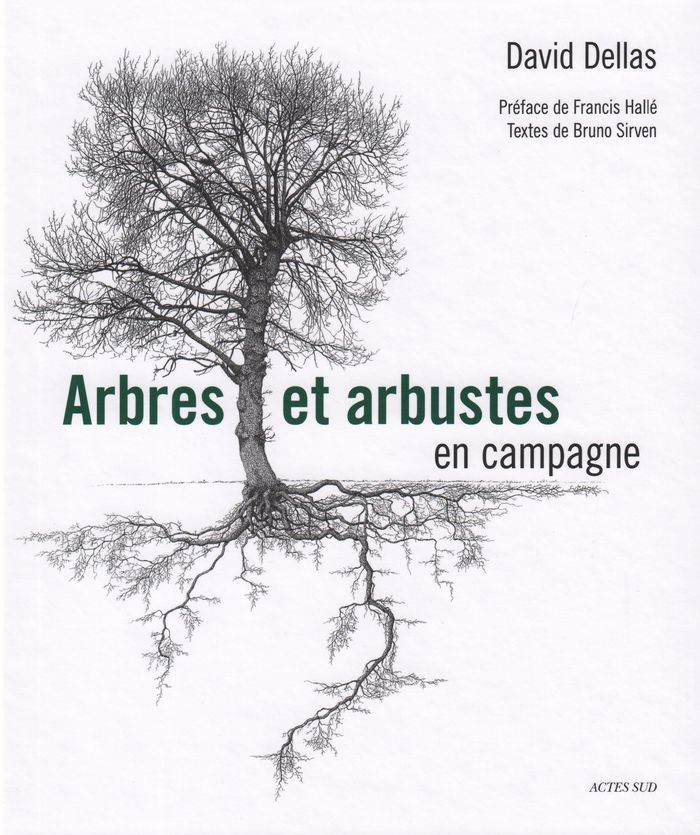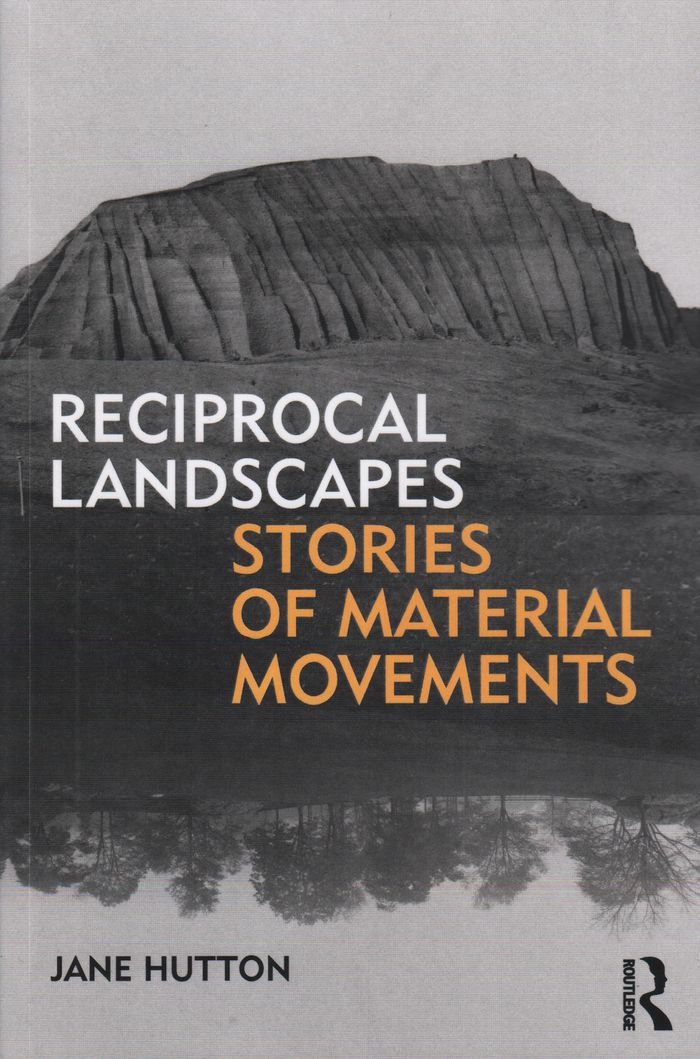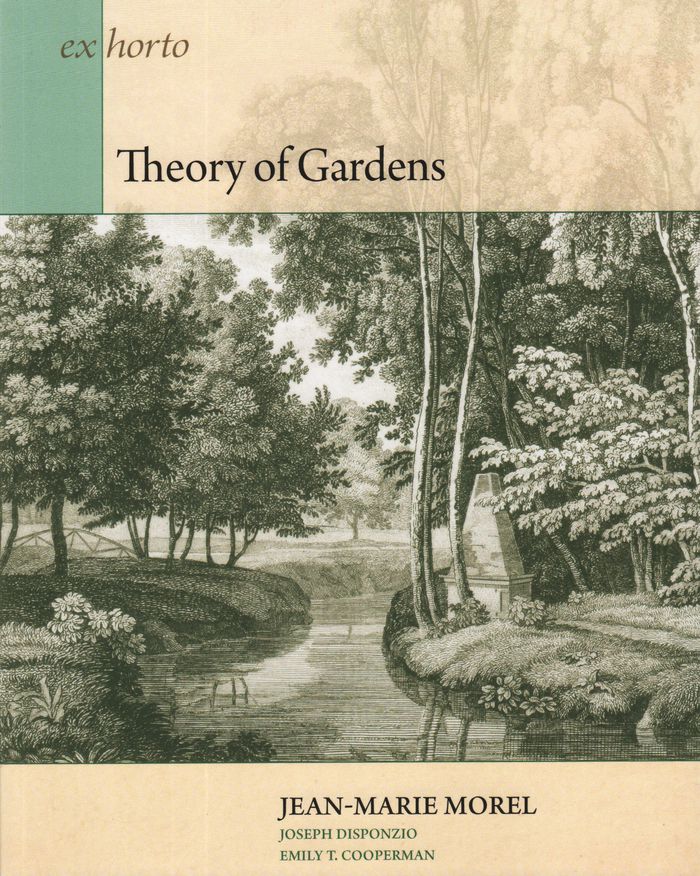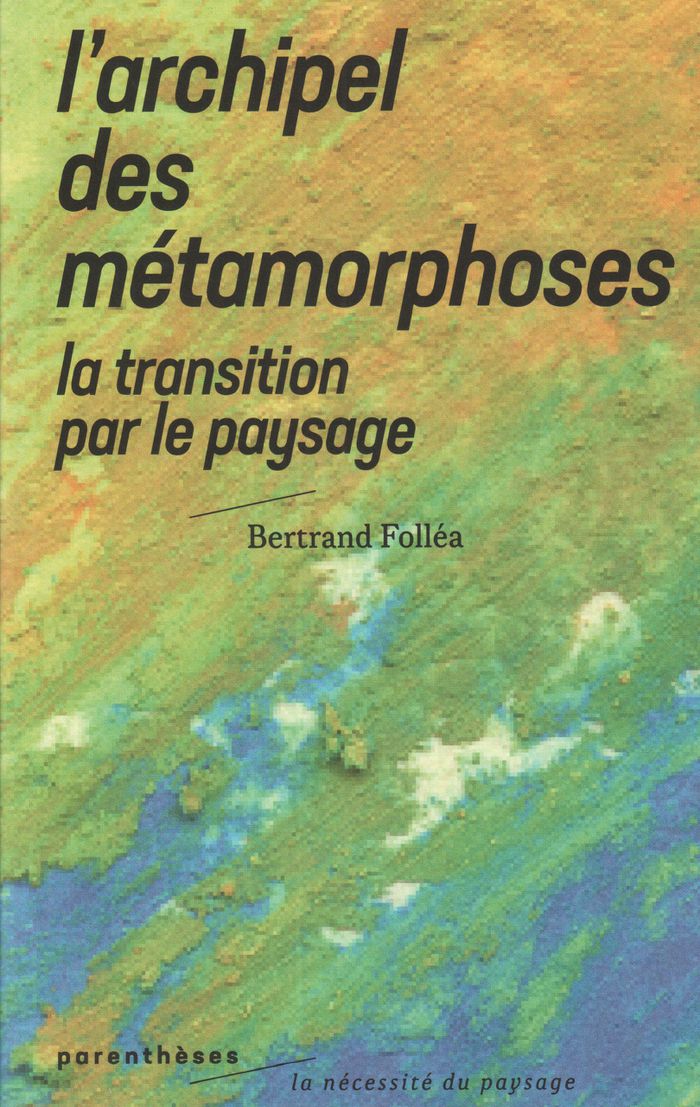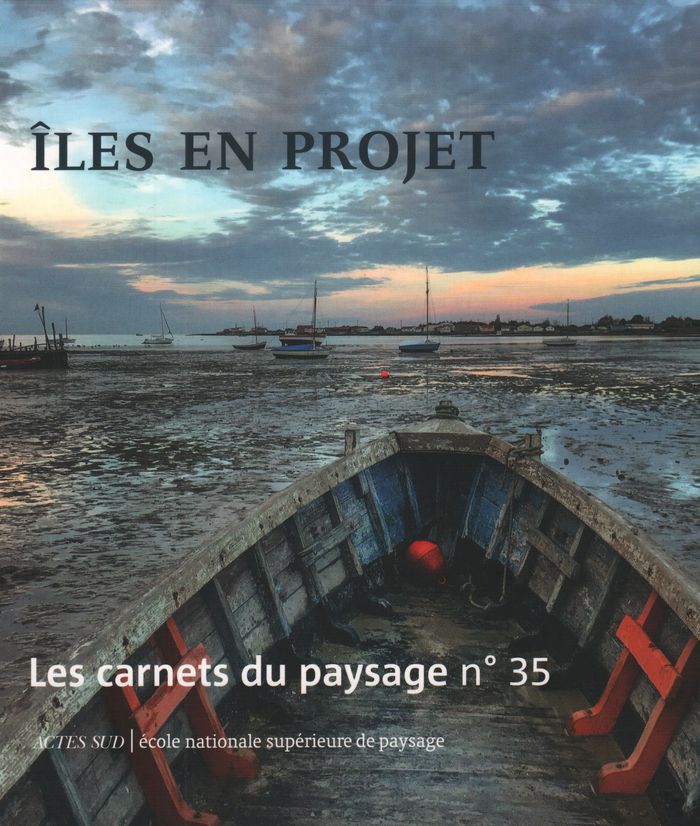$24.95
(available to order)
Summary:
'Heaven's Breath', the first history of the wind, looks at this ubiquitous and invisible entity from the point of view of geography, biology, physics, sociology, physiology, psychology, history, and philosophy. Watson shows how winds shape the world and maintains its life world, functioning as the circulatory and nervous systems of the planet, sharing our energy and(...)
Heaven's breath: a natural history of the wind
Actions:
Price:
$24.95
(available to order)
Summary:
'Heaven's Breath', the first history of the wind, looks at this ubiquitous and invisible entity from the point of view of geography, biology, physics, sociology, physiology, psychology, history, and philosophy. Watson shows how winds shape the world and maintains its life world, functioning as the circulatory and nervous systems of the planet, sharing our energy and information, distributing warmth, bringing rain, enriching or stripping away soil, air-conditioning the globe.
Landscape Theory
$58.95
(available to order)
Summary:
Ecartée au XXe siècle au profit de la photographie, la pratique du dessin s'inscrit dans une longue tradition des sciences naturelles et de la botanique. Parce qu'il interprète autant qu'il décrit, le dessin amplifie la vision et permet de saisir dans son ensemble la réalité d'un objet vivant et complexe. L'arbre est de ceux-là, et des trésors d'informations, qui(...)
Arbres et arbustes en campagne
Actions:
Price:
$58.95
(available to order)
Summary:
Ecartée au XXe siècle au profit de la photographie, la pratique du dessin s'inscrit dans une longue tradition des sciences naturelles et de la botanique. Parce qu'il interprète autant qu'il décrit, le dessin amplifie la vision et permet de saisir dans son ensemble la réalité d'un objet vivant et complexe. L'arbre est de ceux-là, et des trésors d'informations, qui échappent aux outils d'enregistrement les plus modernes, surgissent opportunément sous le crayon expert de David Dellas. Par la puissance de son réalisme, l'ouvrage procure un sentiment de proximité et d'émerveillement, et, comme l'indique Francis Hallé, "nous voyons enfin les arbres et arbustes de nos régions comme ils sont réellement, représentés avec une précision et une sensibilité telles que leur identification devient aisée et presque immédiate". Au fil d'un sobre et vibrant plaidoyer iconographique pour la biodiversité ordinaire, l'auteur pro- pose une "flore" accessible à tous, permettant de découvrir et de reconnaître les arbres champêtres, compagnons de notre quotidien, dont on a oublié la noblesse, la rusticité et les grandes utilités... Des arbres discrets et ignorés, qui jouent pourtant un rôle transversal et précieux dans le devenir et la durabilité des territoires et de l'agriculture.
Landscape Theory
$81.50
(available to order)
Summary:
''Reciprocal landscapes: stories of material movements'' traces five everyday landscape construction materials – fertilizer, stone, steel, trees, and wood – from seminal public landscapes in New York City, back to where they came from. Drawing from archival documents, photographs, and field trips, the author brings these two separate landscapes – the material’s source and(...)
Reciprocal landscapes: stories of material movements
Actions:
Price:
$81.50
(available to order)
Summary:
''Reciprocal landscapes: stories of material movements'' traces five everyday landscape construction materials – fertilizer, stone, steel, trees, and wood – from seminal public landscapes in New York City, back to where they came from. Drawing from archival documents, photographs, and field trips, the author brings these two separate landscapes – the material’s source and the urban site where the material ended up – together, exploring themes of unequal ecological exchange, labor, and material flows. This book considers the social, political, and ecological entanglements of material practice, challenging readers to think of materials not as inert products but as continuous with land and the people that shape them, and to reimagine forms of construction in solidarity with people, other species, and landscapes elsewhere.
Landscape Theory
Theory of gardens
$50.00
(available to order)
Summary:
Jean-Marie Morel (1728–1810), a leading French landscape designer and theorist, is now mainly remembered as the author of one of the fundamental eighteenth-century texts in the history of landscape architecture, the 'Théorie des jardins' (1776; second edition, 1802). With his background as an engineer, Morel was instrumental in shaping the functions of landscape(...)
Theory of gardens
Actions:
Price:
$50.00
(available to order)
Summary:
Jean-Marie Morel (1728–1810), a leading French landscape designer and theorist, is now mainly remembered as the author of one of the fundamental eighteenth-century texts in the history of landscape architecture, the 'Théorie des jardins' (1776; second edition, 1802). With his background as an engineer, Morel was instrumental in shaping the functions of landscape architecture, opening up a new professional domain by coining the term architecte-paysagiste, the precursor to the modern designation landscape architect. This translation marks the first time the 1776 edition of the 'Théorie des jardins' is available in English.
Landscape Theory
$29.95
(available to order)
Summary:
La démarche paysagère mise au jour dans cet ouvrage apparaît profondément innovante, voire révolutionnaire : elle est contre les spécialistes, les disciplinés, les simplificateurs, les séparateurs, les réducteurs, les rationalistes, qui défont la planète. Elle porte l’ambition folle de redessiner le monde.
L'archipel des métamorphoses : la transition par le paysage
Actions:
Price:
$29.95
(available to order)
Summary:
La démarche paysagère mise au jour dans cet ouvrage apparaît profondément innovante, voire révolutionnaire : elle est contre les spécialistes, les disciplinés, les simplificateurs, les séparateurs, les réducteurs, les rationalistes, qui défont la planète. Elle porte l’ambition folle de redessiner le monde.
Landscape Theory
$54.95
(available in store)
Summary:
Les îles sont des lieux de vie, une vie singulière, et on s'interroge aujourd'hui sur les possibilités de la préserver, de l'entretenir, mais aussi de la projeter vers le futur. Comment agir dans les îles pour y maintenir et y développer des cadres de vie satisfaisants pour les populations qui y résident ? Comment y faire coexister des usages, des intérêts, des volontés(...)
Les carnets du paysage, numéro 35 : îles en projet
Actions:
Price:
$54.95
(available in store)
Summary:
Les îles sont des lieux de vie, une vie singulière, et on s'interroge aujourd'hui sur les possibilités de la préserver, de l'entretenir, mais aussi de la projeter vers le futur. Comment agir dans les îles pour y maintenir et y développer des cadres de vie satisfaisants pour les populations qui y résident ? Comment y faire coexister des usages, des intérêts, des volontés hétérogènes portées par des populations aux activités et aux aspirations différentes ? Comment, surtout, répondre aux défis environnementaux, qui touchent aussi bien aux questions de biodiversité végétale et animale qu'à celles de la qualité des conditions spatiales, paysagères et architecturales de la vie sociale ? Ce numéro des Carnets du paysage envisage aussi les îles comme des mondes imaginaires et comme le cadre d'expériences particulières où s'expriment les notions de singularité et d'étrangeté, vécues comme éloignement et isolement.
Landscape Theory
The pebbles on the beach
$22.50
(available to order)
Summary:
This is a spirited guide to the simple pleasure of pebble spotting. Clarence Ellis is a charming, knowledgeable and witty guide to everything you didn't know there was to know about pebbles. He ruminates on what a pebble actually is, before showing us how they are formed, advising on the best pebble-spotting grounds in the UK, helping to identify individual stones, and(...)
The pebbles on the beach
Actions:
Price:
$22.50
(available to order)
Summary:
This is a spirited guide to the simple pleasure of pebble spotting. Clarence Ellis is a charming, knowledgeable and witty guide to everything you didn't know there was to know about pebbles. He ruminates on what a pebble actually is, before showing us how they are formed, advising on the best pebble-spotting grounds in the UK, helping to identify individual stones, and giving tips onthe necessary kit. You'll know your chert from your schist, your onyx from your agate and will be on your guard for artificial intruders before you know it. Understanding the humble pebble makes a trip to the beach, lake-side or river bank simply that little bit more fascinating. A handy illustrated guide to identifying pebbles is included on the reverse of the book jacket.
Landscape Theory
$15.99
(available to order)
Summary:
In 1845, the American Transcendentalist philosopher Henry David Thoreau went to live in the woods near his hometown of Concord, Massachusetts. For over two years he resided there largely in solitary, in a small cabin built by his own hands. Walden is his personal account of this time, in which he documents both his passion for the landscape and wildlife of Walden Pond,(...)
Walden
Actions:
Price:
$15.99
(available to order)
Summary:
In 1845, the American Transcendentalist philosopher Henry David Thoreau went to live in the woods near his hometown of Concord, Massachusetts. For over two years he resided there largely in solitary, in a small cabin built by his own hands. Walden is his personal account of this time, in which he documents both his passion for the landscape and wildlife of Walden Pond, and his philosophical and political motivations for rejecting the materialism which continues to define not only America, but much of the modern world.
Landscape Theory
La forêt au Moyen Âge
$49.95
(available to order)
Summary:
L’ouvrage porte essentiellement sur la forêt au Moyen Âge entre le Ve et le XVe siècle sans pour autant s’y restreindre, faisant parfois des ponts avec les périodes antérieures et postérieures pour une meilleure compréhension des diverses évolutions. L’intérêt principal de cette somme est de croiser de multiples approches scientifiques et textuelles. En faisant appel à(...)
La forêt au Moyen Âge
Actions:
Price:
$49.95
(available to order)
Summary:
L’ouvrage porte essentiellement sur la forêt au Moyen Âge entre le Ve et le XVe siècle sans pour autant s’y restreindre, faisant parfois des ponts avec les périodes antérieures et postérieures pour une meilleure compréhension des diverses évolutions. L’intérêt principal de cette somme est de croiser de multiples approches scientifiques et textuelles. En faisant appel à des spécialistes de disciplines peu, voire pas représentées habituellement dans les ouvrages historiques, elle met en forme des données très récentes souvent issues de programmes encore en cours, que ce soit en archéologie, en palynologie, ou en dendrochronologie.
Landscape Theory
$22.00
(available to order)
Summary:
L'architecture n'est peut-être rien d'autre que l'art de construire des climats : « corriger artificiellement ce que la nature a d’incommode », comme l'écrivait Vitruve. Pour Philippe Rahm, l'architecture existe parce que le climat naturel est le plus souvent inhospitalier au séjour des hommes : trop chaud ou trop froid ; trop sec ou trop humide ; trop sombre ou trop(...)
Le jardin métérologique et autres constructions climatiques
Actions:
Price:
$22.00
(available to order)
Summary:
L'architecture n'est peut-être rien d'autre que l'art de construire des climats : « corriger artificiellement ce que la nature a d’incommode », comme l'écrivait Vitruve. Pour Philippe Rahm, l'architecture existe parce que le climat naturel est le plus souvent inhospitalier au séjour des hommes : trop chaud ou trop froid ; trop sec ou trop humide ; trop sombre ou trop ensoleillé.L'architecture doit adoucir, intensifier, mitiger : réguler le climat naturel pour le rendre habitable. Le réchauffement climatique modifiera l'écologie urbaine mondiale : unparc de 67 hectares à Taïwan en constitue un prototype tropical. Sous forme de contes, « Jardin météorologique », « Extérieur atténué » ou « Gradation d'intériorité » nous montrent la voie...
Landscape Theory
